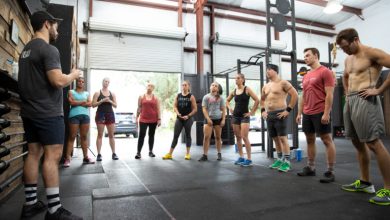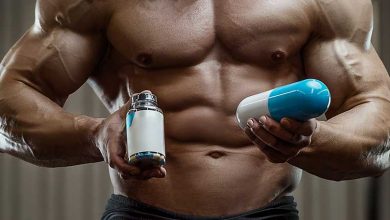What Are Essential Garage Door Maintenance Tips?

It’s a coincidence that just last week, your neighbor mentioned their garage door malfunctioned, prompting you to think about your own. You might not realize it, but regular maintenance is key to preventing similar issues. Simple tasks like visual inspections and lubrication can make a significant difference. If you’re curious about how to keep your garage door in top shape and avoid costly repairs, you’ll want to know which essential tips can help you achieve that.
Key Takeaways
- Conduct regular visual inspections for frayed cables, rust, and misaligned tracks to identify potential issues early.
- Lubricate moving parts every 6 months using silicone spray or lithium grease to ensure smooth operation.
- Clean garage door tracks regularly with specialized lubricants to prevent debris buildup and enhance functionality.
- Test safety features, including sensor alignment and manual override, to ensure safe operation of the garage door.
- Replace weather seals if damaged to protect against drafts, moisture, and pests, maintaining energy efficiency.
Regular Visual Inspections
Regular visual inspections of your garage door can help you identify potential issues before they escalate into costly repairs.
Create an inspection checklist to systematically assess components such as springs, cables, rollers, and tracks.
Look for common issues like frayed cables, rust, or misaligned tracks.
Make sure you follow safety precautions, such as disconnecting the door from the opener and using proper protective gear.
If you notice any abnormalities, apply troubleshooting tips like adjusting the sensors or tightening loose hardware.
Document your findings to track any recurring problems, allowing you to address them promptly.
Lubrication Techniques
To keep your garage door operating smoothly, understanding the right types of lubricants is essential.
You’ll want to apply these products at recommended intervals to prevent wear and tear.
Let’s explore the best lubrication techniques to guarantee your door functions effectively.
Types of Lubricants
Selecting the fitting lubricant for your garage door is crucial, as it ensures smooth operation and prolongs the lifespan of the door’s components. The top lubricants include silicone spray, lithium grease, and Teflon-based products.
Silicone spray is outstanding for metal and plastic parts, providing a long-lasting, water-resistant barrier.
Lithium grease, conversely, is ideal for metal-to-metal contact points, like the rollers and hinges, because of its thicker consistency and durability.
Teflon-based lubricants offer a non-sticky finish and are ideal for areas where dust accumulation is a concern.
For proper application, make sure you clean the surfaces before applying the lubricant to prevent debris from interfering with performance. Choose the right type to maintain peak functionality.
Application Frequency Guidelines
Knowing the right timing to apply lubricant is crucial for maintaining your garage door’s smooth operation and extending its lifespan. Frequency recommendations suggest lubricating your garage door components every six months. However, if you live in a particularly humid or dusty area, consider doing it every three months.
Common mistakes include over-lubricating, which can attract dirt and create buildup, and neglecting to lubricate parts like rollers, hinges, and tracks.
Always use the appropriate lubricant type, as specified in the manufacturer’s guidelines, to avoid damaging the components. Remember to clean the surfaces first to ensure peak adhesion.
Testing Safety Features
Regularly testing your garage door’s safety features validates it operates correctly and safeguards your family from potential hazards. Start by checking the safety sensors, which should detect any obstacles in the door’s path. When the sensors are aligned properly, the door will reverse upon contact with an object. Next, use your remote control to test the door’s response. Make sure it opens and closes smoothly without any unusual noises.
Here’s a quick checklist for testing safety features:
| Test | Action |
|---|---|
| Safety Sensor Alignment | Confirm sensors are clean and aligned |
| Object Detection | Place an object in the door’s path |
| Remote Control Function | Open and close the door with the remote |
| Manual Override Check | Test manual release mechanism |
| Emergency Stop | Validate the stop feature functions properly |
Cleaning Garage Door Tracks
Cleaning your garage door tracks is essential for smooth operation and longevity. You’ll need specific tools and a clear step-by-step process to effectively remove dirt and debris.
Additionally, we’ll cover how to prevent future dirt buildup, ensuring your tracks remain in top condition.
Tools Needed for Cleaning
To effectively clean your garage door tracks, gather essential tools such as a vacuum, a soft brush, and a lubricant specifically designed for garage doors. A vacuum helps remove dirt and debris, while a soft brush can dislodge stubborn particles without damaging the track.
You’ll also need cleaning products to wipe down the tracks and make certain they’re free from grime. Additionally, consider using safety equipment like gloves and goggles to protect yourself during the cleaning process. These tools not only enhance your efficiency but also guarantee safety while you work.
With the right equipment in hand, you’re well-prepared to maintain your garage door tracks effectively.
Step-by-Step Cleaning Process
Begin by disconnecting the garage door opener for safety before you start the cleaning process. Use a vacuum with a hose attachment to remove loose debris from the tracks.
Next, apply a cleaning solution made from warm water and mild detergent. Use a soft cloth or sponge to scrub the tracks, focusing on any buildup. After scrubbing, rinse the tracks with clean water to remove any soap residue.
For stubborn grime, consider specialized cleaning techniques, such as using a soft-bristle brush. Once the tracks are clean, dry them thoroughly to prevent rusting.
Incorporating this step into your regular maintenance schedules will help ensure smooth operation and prolong the life of your garage door system.
Preventing Future Dirt Buildup
Maintaining clean garage door tracks is key to preventing future dirt buildup and ensuring peak performance. To achieve effective dirt prevention, adopt regular cleaning techniques, such as vacuuming debris and wiping the tracks with a damp cloth. This simple routine helps maintain best functionality and reduces wear on moving parts.
For long-term maintenance, consider applying a silicone-based lubricant to the tracks after cleaning—this minimizes friction and helps repel dirt. Additionally, take proactive measures by inspecting the tracks regularly for obstructions or signs of wear.
Examining Springs and Cables
How often do you check the springs and cables on your garage door, as their condition is important for safe and efficient operation? Regular inspections are vital.
First, examine the springs for appropriate spring tension; they should be neither too tight nor too loose. If you notice any signs of wear, such as rust or stretching, consider replacing them immediately.
Next, inspect the cables for fraying or any visible damage. Frayed cables can lead to serious accidents, causing the door to malfunction.
If you find any issues with the springs or cables, don’t hesitate to consult a professional. Keeping these components in good condition guarantees your garage door operates smoothly and safely for years to come.
Adjusting Door Alignment
Ensuring your garage door is properly aligned is essential for its smooth operation and longevity. Misalignment can lead to excessive wear, noisy operation, or even damage.
To perform alignment adjustments, start by visually inspecting the tracks. They should be straight and parallel. If you notice any bends, use a rubber mallet to gently correct them.
Next, check the door balance by disconnecting the opener and manually lifting the door; it should stay in place. If it doesn’t, you may need to adjust the springs.
For effective troubleshooting techniques, regularly review your door’s movement and listen for any unusual sounds.
Following these maintenance tips will help keep your garage door functioning efficiently and extend its lifespan.
Checking Remote Functionality
Regularly examining your garage door remote’s functionality is crucial for seamless access and security. Start by testing the remote to make sure it operates smoothly. If it doesn’t respond, you might be facing troubleshooting issues. First, check the battery; a simple battery replacement often resolves the problem.
| Issue | Solution |
|---|---|
| Remote unresponsive | Replace the battery |
| Limited range | Reposition the antenna |
| Intermittent signal | Check for interference |
| LED light not working | Inspect remote for damage |
Weather Seal Maintenance
Maintaining the weather seal on your garage door is crucial to safeguarding your home from drafts, moisture, and pests. Regularly inspect the seal for any signs of wear, such as cracks or gaps.
If you notice significant damage, consider a seal replacement to guarantee effective weatherproofing. For minor issues, you can perform DIY maintenance by cleaning the seal and applying a weather-resistant lubricant. This helps sustain flexibility and prevents cracking.
However, if the seal’s condition is severely compromised or if you’re unsure about the repair process, don’t hesitate to seek professional help.
Proper maintenance of your weather seal will enhance your garage’s energy efficiency and longevity, ultimately protecting your home’s integrity.
Professional Maintenance Services
Hiring expert maintenance services for your garage door can significantly enhance its performance and longevity. While DIY maintenance can help with minor issues, professionals bring expertise that guarantees thorough care. They can identify underlying problems you might overlook and provide cost-effective solutions tailored to your garage door’s unique needs.
Regular inspections conducted by trained technicians can prevent costly repairs down the road. They’ll perform essential tasks like lubrication, alignment checks, and spring adjustments, improving the door’s functionality. Additionally, specialists can recommend upgrades or modifications that enhance efficiency.
Investing in professional maintenance not only extends your garage door’s lifespan but also ensures it operates safely and smoothly, giving you peace of mind.
Conclusion
By staying proactive with your garage door maintenance, you’re not just enhancing its performance; you’re also extending its lifespan.
Regular inspections, proper lubrication, and testing safety features keep your door running smoothly. Cleaning tracks, examining springs, and adjusting alignment guarantee safe operation.
Don’t forget to check your remote functionality and maintain weather seals to keep out drafts. With these essential tips, you’ll prevent costly repairs and enjoy peace of mind knowing your garage door is in top shape.









